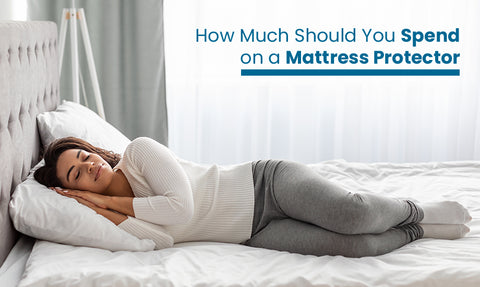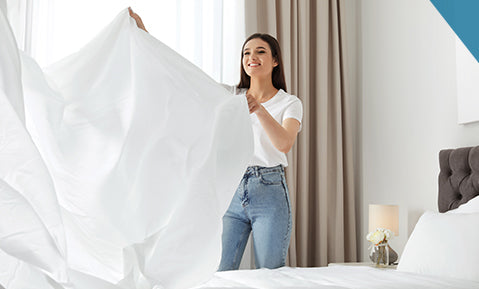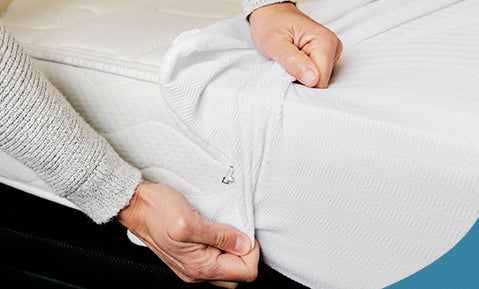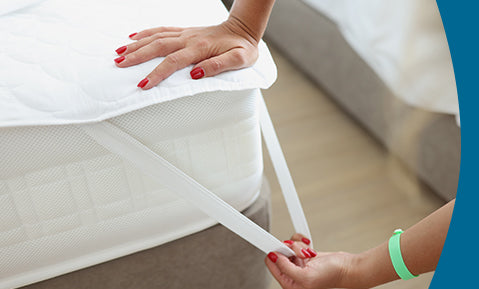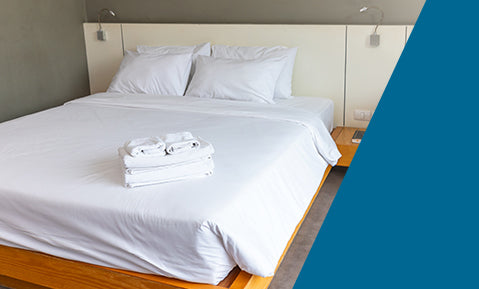
One of the most important functions our body is to get good sleep so that we could let our mind relax and let other functions to continue. It’s a way to replenish and restore body’s energy. And what happens if we do not sleep well? Other than being irritated, fatigued, drowsy we tend to develop sleep disorders if our sleep cycle remains disturbed for long period of time like insomnia, narcolepsy, restless leg syndrome, etc.
One of the quick remedial approach is Acupressure therapy and is growing quickly. It is a hand-mediated energy healing technique which is considered as useful strategy for the management of multiple symptoms, along with beneficial physical comforts, satisfaction and economy. It is a manually operated, needle-free, non-invasive, cost-effective and non pharmacological healing intervention to promote patients' well-being. The art of pressure acupuncture has been derived from ancient Chinese practices and Indian Ayurveda and exhibits superior therapeutic potential against various diseases and illnesses. It energises the spirit, our minds and emotions, channels energy to body. It also aids in sleep and certain pressure points provide benefit to mind and body. For good physical health and mental health it is important to maintain Qi. Qi is the vital energy that flow through these invisible meridians (pressure points/ acupoints) as per Chinese medicine and philosophy. Blockage of any one of the meridians can lead to illness.
Do you know what meridians are?
Meridians, Acupoints or pressure points are the points or areas on the body that when manipulated in specific manner produce significance pain and effects. The art of pressure acupuncture has been derived from ancient Chinese practices and Indian Ayurveda and exhibits superior therapeutic potential against various diseases and illnesses. It is based on the principle of activation of acupoints across meridians which can be facilitated by the fingers or hand devices. According to Chinese theory these 12 meridians are yin and yang organs, bilaterally symmetrical organs. Yin and yang organs are principle meridians that balance each other out, one is hot and the other includes cold. These meridians are intersected by the midline meridians.
Anatomically speaking, tendinomuscular meridians were considered as superficial meridians associating body with the environment and principle meridians present in deep organs but it was not scientifically proven. Recently studies suggested neural hypothesis, in which stimulation of sensory nerves sends information to brain causing clinical changes associated with the treatment. Neural innervation is the most acceptable theory because of the evidence that pain can be triggered or abolished after giving medicines or local anesthetics at specific acupoints. Acupoints are the most sensitive areas including nerves, arteries, blood capillaries or ligaments rich in nerve endings. Pain was considered to be blocking the normal flow of vital energy and applying pressure at specific tender point restores the normal circulation and reliefs the person of pain. Though direction of radiation of pain cannot be construed as the evidence but neurological sensations points towards neural hypothesis. Acupoints are located on major neural pathways.
How the therapy works?
It is based on the principle of activation of acupoints across meridians which can be facilitated by the fingers or hand devices. In the therapy, muscular tension is released when pressure is applied on the acupoints, the amount of pressure applied controls the flow of physiological energy. It demands physical pressure on specific trigger points which are placed at meridians. Different techniques can be administered to stimulate the Qi channel which would tonify, calm or disperse it. The pressure is applied in circular movements for several seconds to moments. Pressure can be applied either by fingers, palm of the hands or any device. The treatment is a sensitive treatment but not a painful treatment.
Now let s discuss about the various acupoints that helps a person for their better sleep!
- An Mian: One of the best acupressure points for treating various sleep issues is the An Mian. One centimetre behind the centre of your ear, a Mian point is positioned. A few repetitions of applying pressure for 10 to 20 seconds can aid in improving sleep. It has been demonstrated to lessen the signs of anxiety, headaches, and insomnia.
- Spirit gate: It is located at the crease on your outer wrist, below your little finger. To stimulate it feel for the small, hollow space in this area and apply gentle pressure in a circular or up-and-down movement, continue for two to three minutes. Then hold the left side of the point with gentle pressure for a few seconds, and then hold the right side.Repeat on the same area of your other wrist. It is used to treat insomnia.
- Bubbling Spring: This point is present on the sole of your foot and is a small depression that appears just above the middle of our foot when we curl our toes inward. Lie in such a position that your hands can reach your feet, then take one foot in your hand and curl your toes and feel for the depression on the sole of your foot. The pressure applied should be firm and massage this point for a few minutes in circular or up-and-down motion. It helps to ground our energy and induces sleep.
- Yin Tang: It is a pressure point that is placed on the head, between our eyebrows. Pressure is applied for a minute and is mild to moderate in intensity. Stimulation of this point helps in reducing high blood pressure, stress, and tension. All aforementioned factors influence the quality of sleep.
- Three Yin intersection: It is located on our inner leg, just above the ankle. Pressure exerted is deep and slightly behind your biggest lower-leg bone (tibia). For few seconds, the pressure point is massaged in circular or up-and-down motions. It helps with insomnia and menstrual cramps.
- Wind pool: These two points are placed on the sides of our vertebra, on the neck, and under the skull. Hold your hands together and gently open your palms with your fingers interlocked to create a cup shape with your hands.Apply firm and deep pressure using your thumbs toward your skull, in circular or up-and-down movements to massage this area for four to five seconds. Breathe deeply as you massage the area. It helps to reduce respiratory symptoms, such as coughing, which often interrupt sleep. Thus helps during sleep disorders like Obstructive sleep apnea and also reduces stress.
- Inner Frontier gate: It is found on your inner forearm between two tendons. Keep your hand upside down such that palms are facing up.Apply a steady downward pressure between the two tendons in this location in a circular or up-and-down motion to massage the area for four to five seconds. It helps you fall asleep along with soothing headaches.
- Tai Chong: It is a point that is placed between our big toe and second toe. Stimulating this acupoint for a minute can reduce high blood pressure, increase blood circulation, and also reduce anxiety. These factors improves the quality of your sleep..
- Taxi: It is located just above the heel of the foot, and is also known as KD3 point. Stimulating it eases insomnia.
What are the other conditions when Pressure therapy can be given to a person?
Other than sleep disorders, its use has been reported in number of health conditions like back discomfort, headaches, exhaustion, stress and tension, sad feelings, and immune system inadequacies are a few conditions that can benefit from acupressure. According to studies, several types of pain are associated with anxiety and stress. Acupressure therapy is not age specific, but those with high blood pressure and pregnant women should avoid it. Specific acupressure spots have been shown to increase the risk of miscarriage. Open wounds, scar tissue, varicose veins, or regions of inflammation or swelling cannot be treated with acupressure. TCM remedies can be used to treat these issues in other ways (ie, herbs, oils). Poor posture is frequently the simple cause of back and joint pain. The neck is particularly vulnerable because of the range of motion in the head and neck. Damage to soft tissues can result from trauma. When acupressure is used to treat certain acupoints between the cervical spine (neck) and the top of the shoulder, pain is reduced. Toxins are eliminated, oxygen and minerals for healing are given, and blood flow is improved.
Myofascial Pain occurs as a result of tightening or hardening of fascia that is found in entire body. Acupuncture releases the rigidness and tension by targeting the trigger points in myofascial network and make it pliable and elastic again.
Conclusion
Over the past two to three thousand years, acupuncture and its many, more modern variations, such as acupressure, have developed as medical practices. As practitioners endeavored to comprehend and explain the sensations elicited during stimulation that appeared to radiate down lines throughout extremities and the body torso, the notions of meridians and acupoints along meridians were empirically developed. However, as of yet, anatomical structures like tendinomuscular meridians and primo-vessels (Bonghan ducts) have not been demonstrated to function physiologically or clinically as meridians as originally proposed by early practitioners. More recently, practitioners have attempted to identify anatomical structures that represent meridians. Additionally, attempts have been made to locate meridians using thermal imaging or radioactive tracer techniques.
However, once more, the effectiveness of these methods in locating meridians has not been demonstrated. The ability of electrode measurements of skin resistance to identify acupoints along meridians to distinguish between acupoints and non-acupoints has also not been demonstrated. The location of acupoints and meridians over larger mixed nerve bundles that contain motor units and sensory fibres and project to parts of the central nervous system that control pain and blood pressure, i.e., conditions that appear to be influenced by acupuncture, has been the most recent and consistent observation. Thus, the neurological hypothesis appears to be the most rational and consistent explanation for how acupuncture works. According to this perspective, meridians and the accompanying acupoints serve as simple road maps that show the practitioner where to apply stimulation for the optimum clinical outcomes. However, the physiological effects and clinical responses to acupuncture in patients can be explained by the stimulation of the underlying brain circuits.
We need to increase awareness of the therapeutic benefits of acupressure and promote its use in hospitals if we are to support and spread CAM therapies in the near future.

